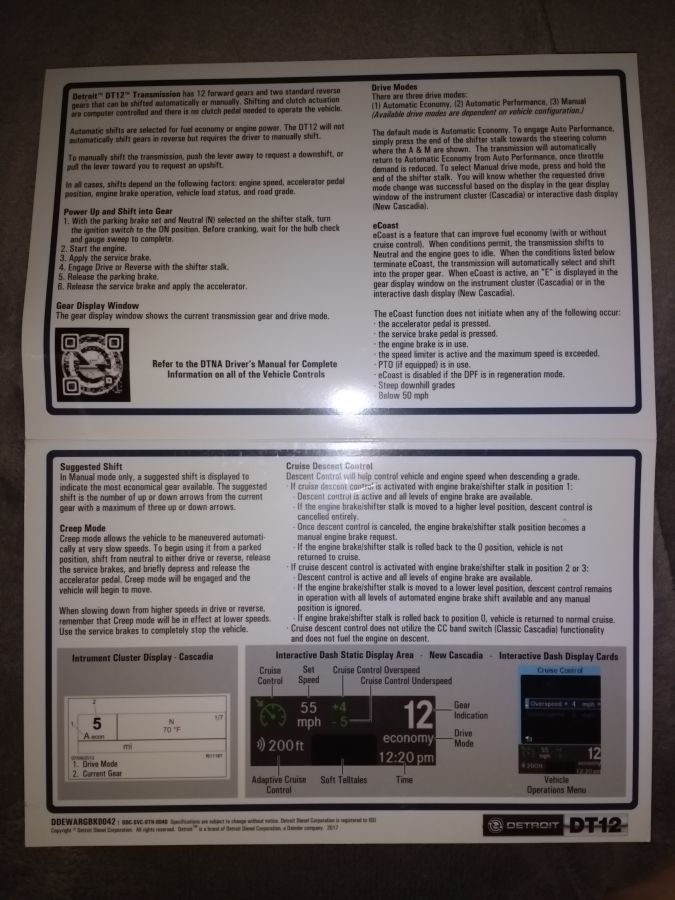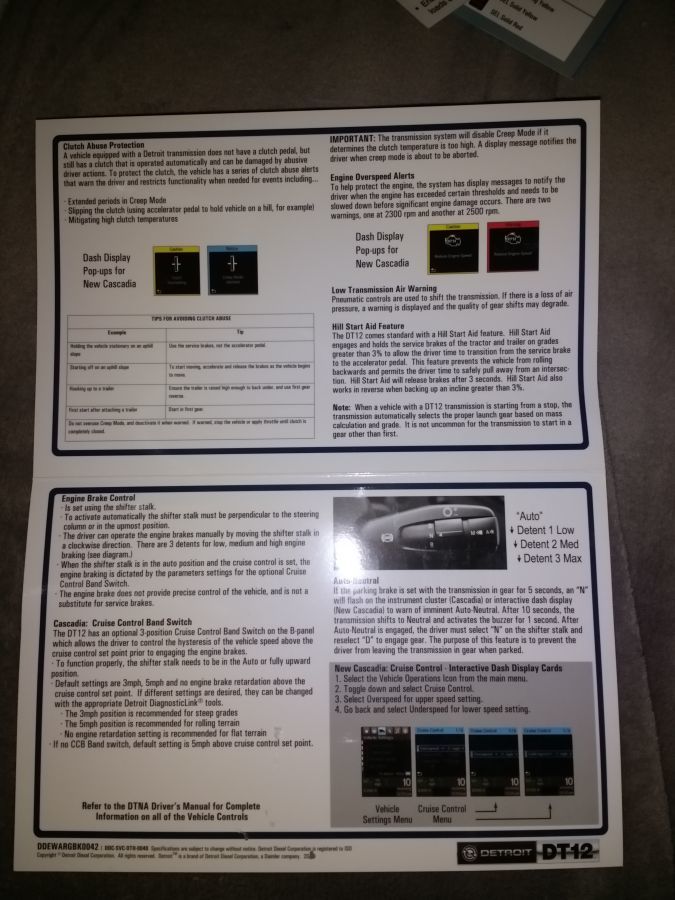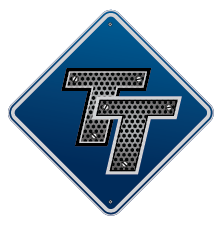Jake Brake?
Topic 26486 | Page 2
Yes using the Jake in wet and slick conditions increases the chance of a jackknife. Think about what a jackknife is: the trailer is moving faster than the tractor and basically pushes the truck out of the way.
What does the Jake do? It slows the truck from the tractor back using the engine against itself. Thus slowing the tractor first and creating a situation where the trailer is going faster than the tractor. Wet conditions make it much more likely to break traction and end up jacking.
Using the service brakes to descend a grade is fairly simple. First make sure you are in the proper gear for the safe speed of decent. When you reach that speed brake until you are 5 to 10 mph below it and then let off the brakes. Rinse and repeat until you get to the bottom.
Remember prior to the late 50s trucks didn't have Jake's, but still had mountains.
Big T, that is really great info. Especially the comment on what causes a jackknife . I learned from that, thank you.
OWI:
Operating While Intoxicated
A lot less nerve wracking than figuring it out in the middle of an OS moment.
This could e nerve wracking, but this practice plays into keeping you safe:
Every once in a while, imagine if the car in front of you stops quickly, or you start to skid, or some other terrible thing happens.
What do you do?
The imagination game will keep you on your toes, and you will be more mindful of actually what you should do.

PackRat makes a very wise suggestion...
Something else I would suggest is taking a look inside the operating manual for any truck you are operating.
Totally agree 100% here.
I am constantly harping on being a student of your craft, which includes understanding how the systems in the truck function. Experience is arguably the best teacher, but having basic knowledge enabled by reviewing the operators manual can assist with safe and efficient operation of your truck.
And a thought for Joseph...take a very good look at what Big-T and Errol wrote. Big-T is an experienced trainer and safe driver. Errol is a CDL instructor. Please take heed at what they wrote... And never use the engine brake (Jake Brake) in wet or winter snowy/icy conditions when under an empty.
I also saw that someone (I think Jim) asked if it’s okay to pull the red valve in lieu of the Johnson (trailer brake) bar while the truck is in motion, downgrade. I’ll reemphasize what has already been written...DO NOT pull either the yellow or red airvalve knobs when in motion. Your brakes will lock...and impossible to release the spring brakes quick enough to avoid a critical event.
Service brakes and emergency brakes are two different technologies/systems and basically work the opposite of each other.
Service brakes can only be applied by pushing the brake pedal when there is sufficient air pressure in the system. The trailer brake or Johnson bar (if present) is part of the service brake system, isolating the trailer brakes from the tractor. Also should not be pulled while in motion; especially in wet conditions. Service brake line is the blue colored gladhand and connection.
The spring brakes are set when no air is present beyond the trailer emergency valve (red knob). “Dumping” the air by pulling the red knob, causes an immediate, 100% spring brake application. Boom! There is zero ability to finesse or control this. Pushing it back-in only causes air to be reintroduced charging the trailer emergency line and will take several seconds for the spring brake to release. There is a very good reason the knob is RED. The emergency airline gladhand and connection is also red. Not a coincidence. Thus when disconnected, there is zero air pressure present holding back the spring brake from being fully engaged.
Revisit the High Road CDL Training Program and take a really hard look at the air brake section and/or your State’s CDL manual to understand how the two braking systems function.
Please work to be a student of your craft. Class 7/8 CMVs are complicated machines and require some individual effort to learn. Reading manuals and studying isn’t just for passing the tests...as you drive and begin to experience real-time situations, the information becomes much more relevant and important.
CDL:
Commercial Driver's License (CDL)
A CDL is required to drive any of the following vehicles:
- Any combination of vehicles with a gross combined weight rating (GCWR) of 26,001 or more pounds, providing the gross vehicle weight rating (GVWR) of the vehicle being towed is in excess of 10,000 pounds.
- Any single vehicle with a GVWR of 26,001 or more pounds, or any such vehicle towing another not in excess of 10,000 pounds.
- Any vehicle, regardless of size, designed to transport 16 or more persons, including the driver.
- Any vehicle required by federal regulations to be placarded while transporting hazardous materials.
CMV:
Commercial Motor Vehicle
A CMV is a vehicle that is used as part of a business, is involved in interstate commerce, and may fit any of these descriptions:
- Weighs 10,001 pounds or more
- Has a gross vehicle weight rating or gross combination weight rating of 10,001 pounds or more
- Is designed or used to transport 16 or more passengers (including the driver) not for compensation
- Is designed or used to transport 9 or more passengers (including the driver) for compensation
- Is transporting hazardous materials in a quantity requiring placards


Most all of the parameters can be enabled or disabled by your company, some even over there air via satellite. So like mine, you may not have manual mode on the transmission nor be able to change the over and under speeds for cruise, etc, but you should still have the cruise descent control which works pretty well and it's not so jerky on downshifts. Also when in cruise you should just be able to turn on the engine brake and it will slow the vehicle until you turn it off or give the truck fuel. There is a noticable delay when using this method though.
New Reply:
New! Check out our help videos for a better understanding of our forum features

















Preview:








 TT On Facebook
TT On Facebook
This could e nerve wracking, but this practice plays into keeping you safe:
Every once in a while, imagine if the car in front of you stops quickly, or you start to skid, or some other terrible thing happens.
What do you do?
The imagination game will keep you on your toes, and you will be more mindful of actually what you should do.